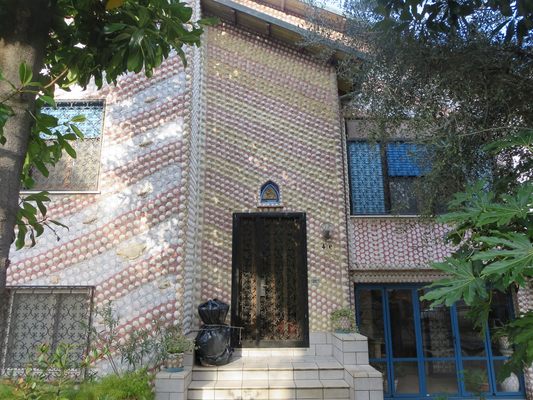About
Alfonso Rinaldi was a taxi driver by trade, but that was not where his true heart lived. Alfonso was an artist.
His seaside home in the Italian village of Rimini is a testament to his creative vision. Using a colored concrete and an assortment of mosaic designs, Rinaldi adorned the entire exterior of his home with over 12,000 shells. Unsatisfied with just the house, he also covered the fence, his flower pots, really anything that was outside, with a surface covering of treasures from the sea.
The shells were collected slowly at first, but soon local fishermen and eateries began to supply him with his medium of choice; scallops, mussels, and clams all gave up their shells to become part of this architectural anomaly, symbolizing the resort village's largest industry. When Rinaldi died, his daughter inherited the house of shells, and after conferring with local authorities, it was decided that the house would be preserved in its shell-covered glory, to be enjoyed for years to come.
Rinaldi's House of Shells is not the only one of it's kind. In Spain, there is Casa de las Conchas, and in France, le Jardin Coquillage, which is more of a "found item" decor that includes shells. In the Spanish village of A Toxa, a 12th century church is adorned in shellwork, and in England, an elaborate shell mosaic covers a grotto in Margate. While Rinaldi may not have been the only artist to use shells as his medium and a building as his canvas, his modest shell house still delights locals and tourists alike.
Related Tags
Published
December 7, 2015
























